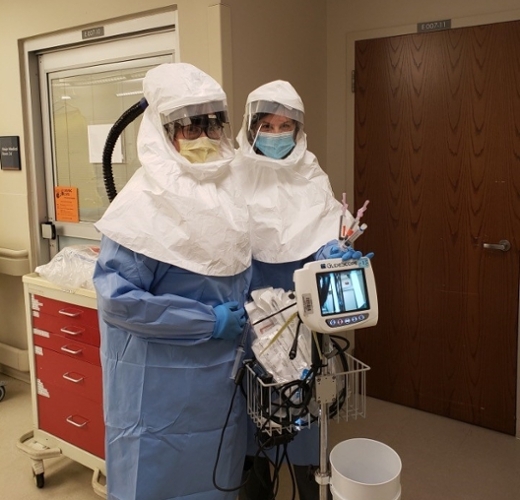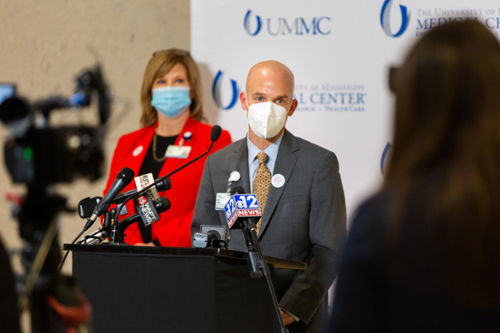From the Front Line

When it became clear in early 2020 that COVID was going to be a major disrupter, Drs. Alan Jones and Kendall McKenzie began ED preparations, and the UMMC Incident Command System, led by Dr. LouAnn Woodward, was stood up to help direct efforts to combat the pandemic. As reports came in from other parts of the world and then our own country, we prepared for the worst.
Early adaptations in our daily practice included sectioning off the ED to cohort possible COVID patients in the ED Observation Unit and Major Medical area. Dr. John McCarter led efforts to train physicians, nurses, and respiratory therapists on proper doffing and donning of PPE. In addition, correct procedures for using the PAPR devices for attending-led intubations were stressed. Drs. Amit Pandit and Joe Doherty, our EM/critical care specialists, developed single-use intubation packs to take in the room when a patient required mechanical ventilation. Ultimately, all rooms were outfitted with portable HEPA filtration devices.
When the second and third waves of COVID came, our hospital was overwhelmed with patients, but the continued attempts to transfer patients to UMMC never stopped. Our mission to care for severe trauma, STEMI, and stroke patients continued. Our state's top health officer, Dr. Thomas Dobbs, stood up a state-wide System of Care in collaboration with the MS Center for Emergency Services. While imperfect, this centralized transfer process truly helped unburden our state's health care system.

Ultimately, two field hospitals were stood up to continue floor and ICU level care. The first, a federal DMAT team with volunteers from all over the United States, was set up in the lower level of our parking garage. The second, provided by Samaritan's Purse, was set up near the new Sanderson Children's Hospital. Both teams were a tremendous blessing to our health care system and the entire state as they allowed us to continue caring for non-COVID patients in the main hospital.
Our entire EM team continued providing top-notch medical care for our citizens throughout all of this. Research continued, and we utilized newer FDA EUA treatments to fight this dreadful illness. The dedication of our clinical staff within the ED and the entire health care system has been remarkable to observe. We continue to fight this disease daily, but we are in a much better position thanks to the hard work of our administrative leaders, attendings, residents, nurses, and respiratory therapists.


